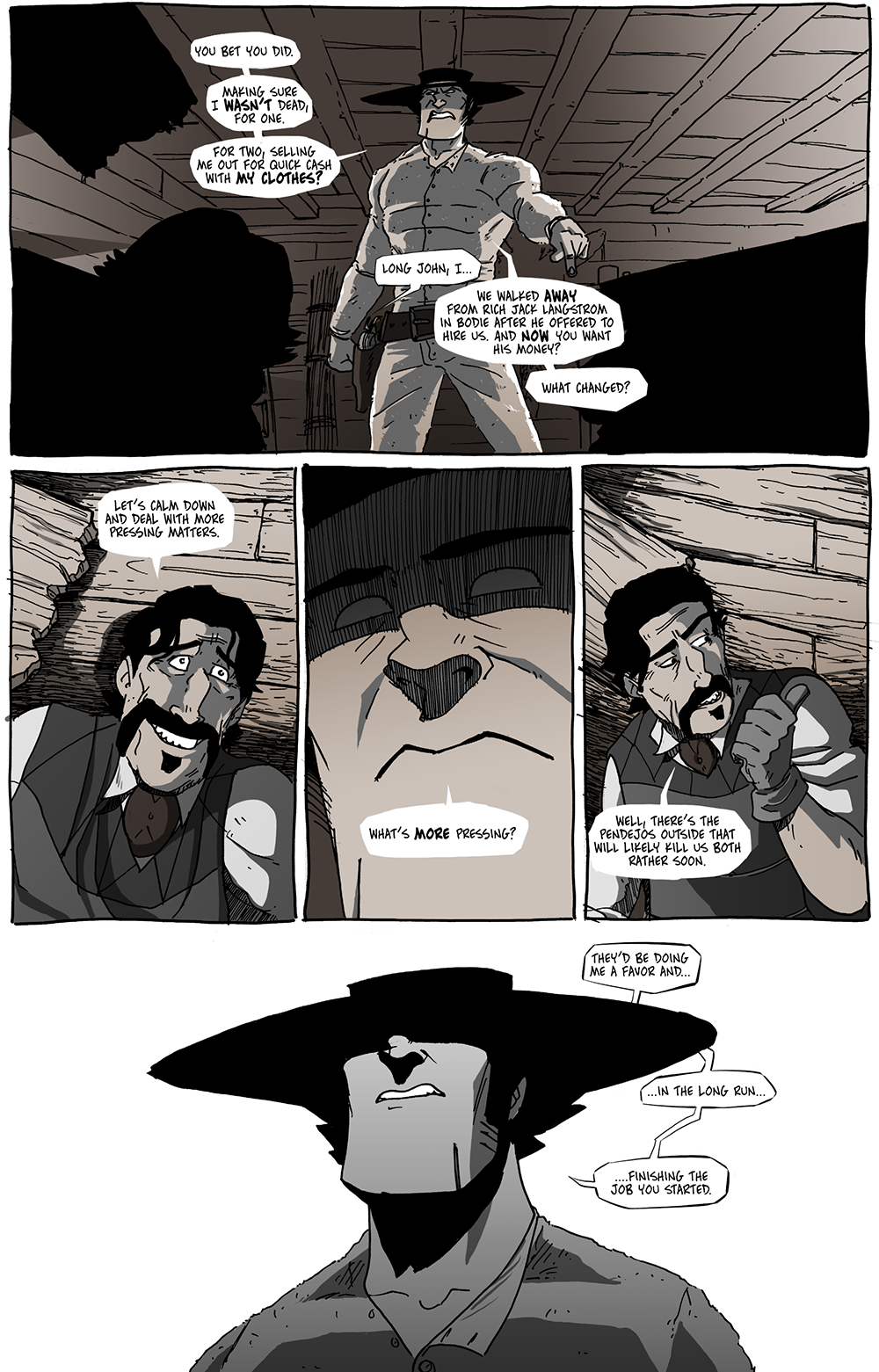Pressing Matters
One subtle but important thing I’ve learned over the decade I’ve been making comics is that you always need to have a sense of place if you’re telling a story. Artists usually list backgrounds low on their list of things they like to draw because they’re not very fun, they can be difficult (no thanks to the demon called “perspective”), they’re more technical and precise than drawing characters––less room to embellish or else it could look “off” and kill the verisimilitude of the scene.
Without a doubt, backgrounds were the part of drawing that had the steepest learning curve for me. Though, I realized––especially while drawing Long John––that I had absorbed enough knowledge and understood how things worked well enough to be able to draw landscapes and buildings and scenery, in perspective, if I just sat down and focused on nothing else while drawing it. The times when I cheat or don’t give it all of my focus do shine through and I leave them in there because, for the most part, the backgrounds do their job well enough.
Luckily, with indoor scenes––in a cabin basically shaped like a big box––the perspective is rather easy. The harder part is to make that space look lived in, which is a whole other set of problems to solve. Narratively, however, this cabin is a hidden one, one without regular tenants, so it’s meant to be pretty bare aside from maybe the things you would expect to see in a hunter’s cabin at around that time.
Once you’re outside man-made walls, however, things change a lot in terms of the rules of perspective. Sure, the basics hold everything together, but what makes a pathway through a forest different than a city sidewalk? It’s an important question to ask because most instructive perspective books focus on the concrete jungle rather than an actual one.
For me, one resource that really broke perspective open for me is an artist with a series of YouTube videos. The only things I know about the artist is his name is Mark, he has a real utilitarian approach to drawing (he has a mechanic’s or machinist’s mind, so he’s really into breaking things down into core components or shapes or patterns), and he makes a lot of his own tech.
That being said, this video, specifically, was an absolute treasure to find:
Watching this video over and over really helped me play more with perspective rather than just treating it like the math of cartooning. As it turns out, there is some level of play that one can have when drawing place and setting, too.



Discussion ¬